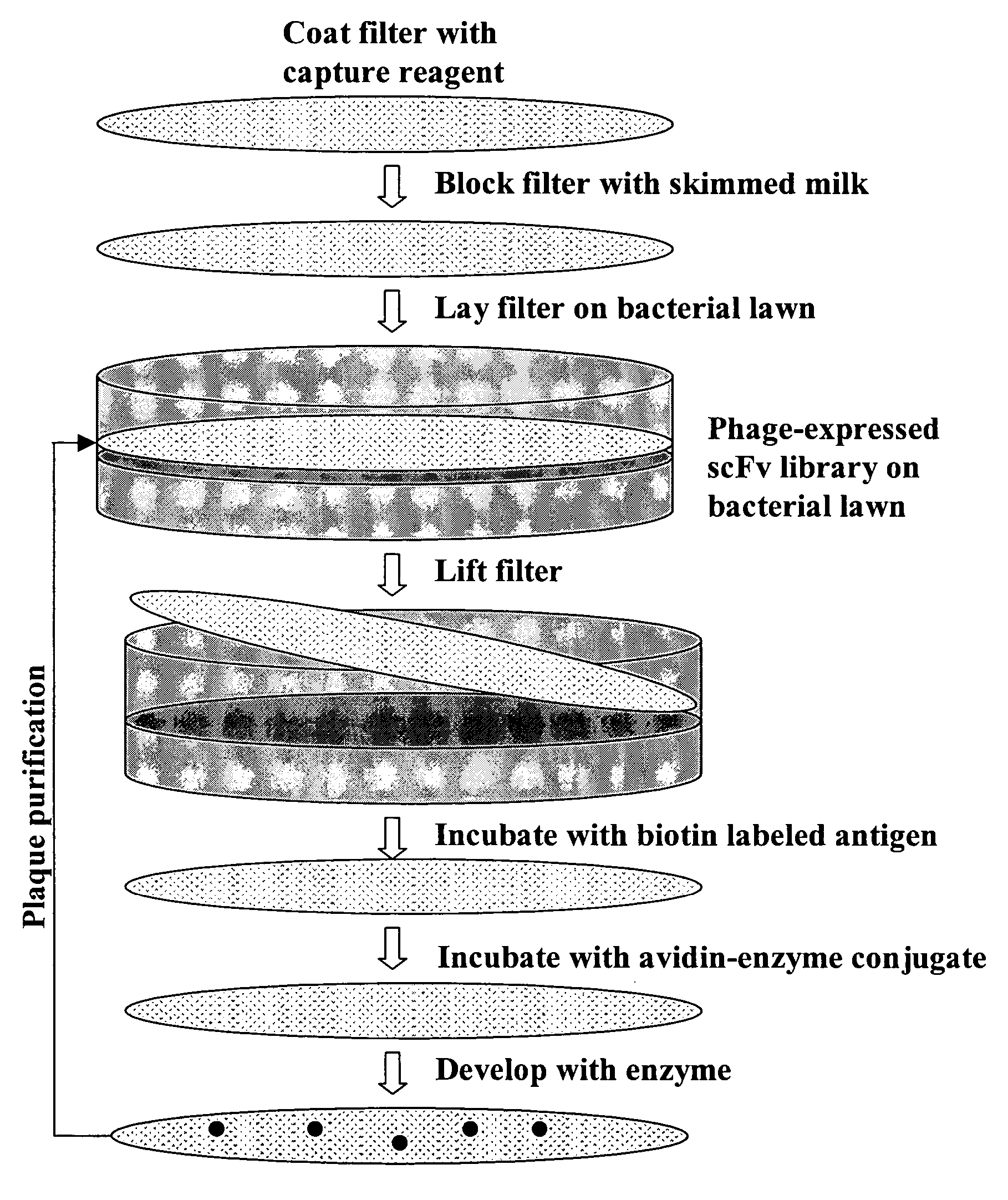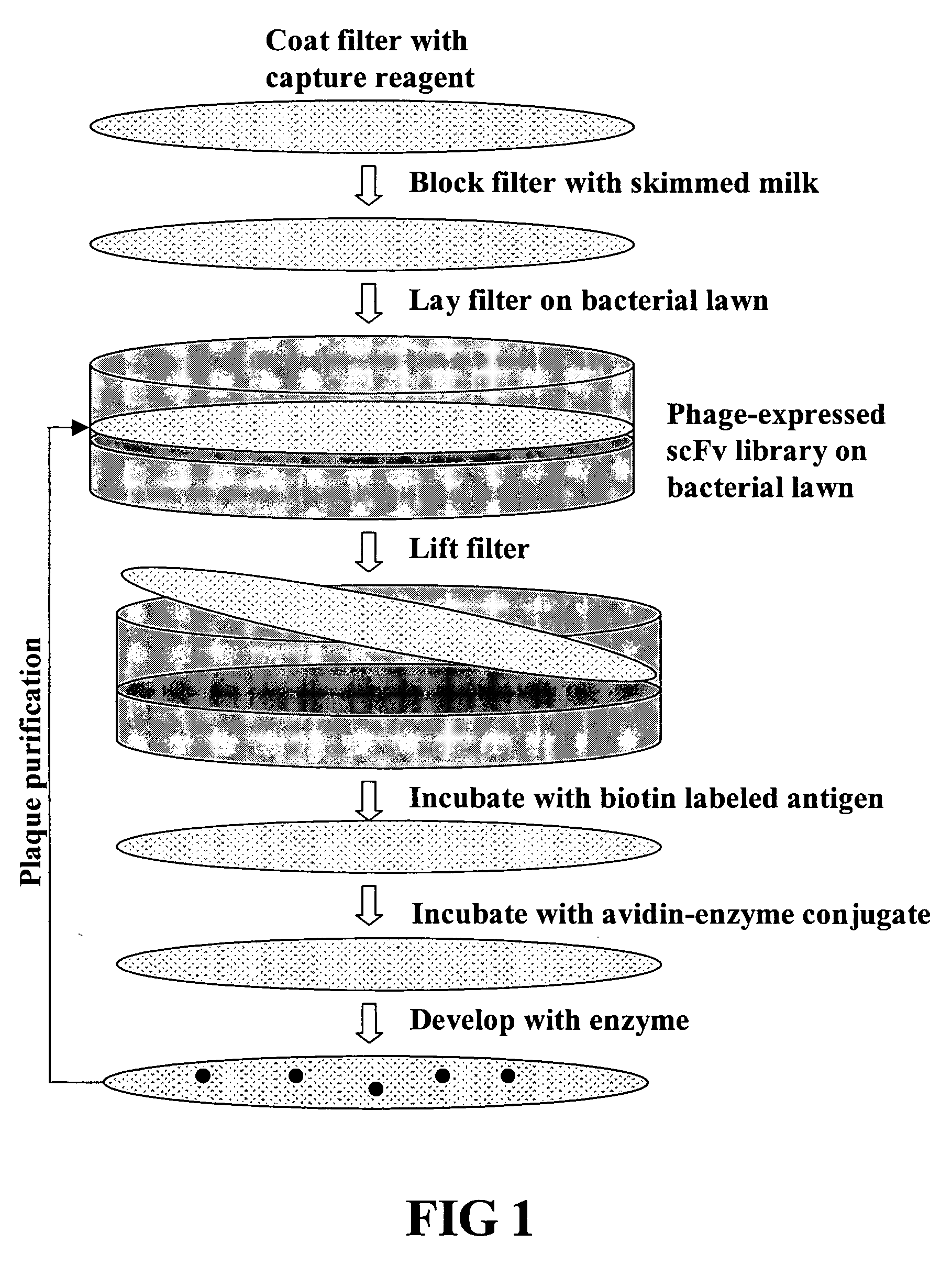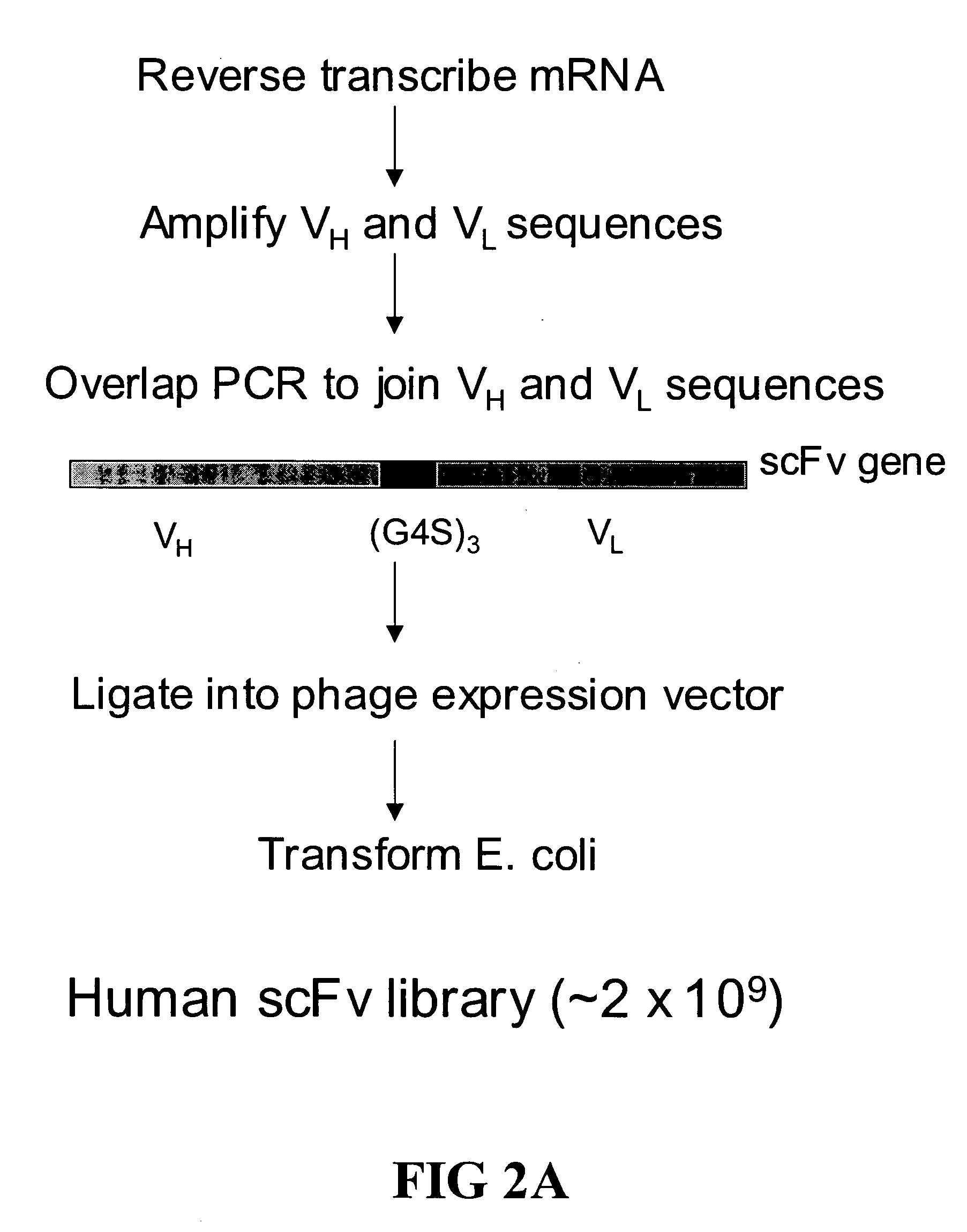Ultra high throughput capture lift screening methods
a screening method and high throughput technology, applied in the field of ultra high throughput capture lift screening methods, can solve the problems of limited growth and display bias, and a few dominant clones that dominate diversity, and achieve the effect of high throughpu
- Summary
- Abstract
- Description
- Claims
- Application Information
AI Technical Summary
Benefits of technology
Problems solved by technology
Method used
Image
Examples
example 1
7.1 Example 1
Ultra High Throughput Screening of a Human scFv Library
[0114] A large phage scFv expression library containing ˜2×109 members was generated from human lymph node and spleen tissues (See, FIG. 2). The entire library was screened using a biotinylated EphA4-Fc fusion protein (See, FIGS. 1, 3 and 4). After three rounds of screening a panel of 24 clones was isolated 20 of which showed strong binding in ELISA assays (See, FIG. 4).
7.1.1 Materials and Methods
[0115] Production of Naïve Human scFv Library: Generation of the Human scFv library was essentially as described in Gao et al., 1999, J. Am. Chem. Soc. 121:6517-6518; and Mao et al., 1999, Proc Natl Acad Sci USA 96:6953-8 with the following changes, a cloning site, complete with epitope tags (see, FIG. 2B) that can serve as immobilization domains, was engineered into M13 and used as an expression vector. Additionally, the scFvs used here are in their native form (i.e., not fused to an M13 coat protein). Briefly, a huma...
example 2
7.2 Example 2
Isolation of an Anti-Idiotype scFv by Ultra High Throughput Screening
[0133] The library generated in Example 1 was also utilized for the identification and isolation of an anti-idiotype antibody which specifically recognizes the antigen binding domain of MEDI-AAA, an anti-interferon-alpha antibody. The library was screened using a biotinylated MEDI-AAA (Fab)2 fragment (FIG. 5). After two rounds of screening 4 clones were isolated, 1 of which showed strong binding in an ELISA assay to the MEDI-AAA antibody while not binding to several unrelated antibodies (see FIG. 6).
7.2.1 Materials and Methods
[0134] Preparation of MEDI-AAA (Fab)2: The MEDI-AAA (Fab)2 was prepared using the immobilized Pepsin reagent (Pierce cat. 20341). Following the manufacturer's directions, 500 μg of MEDI-AAA antibody was digested. The digested antibody was separated from the pepsin resin by centrifugation and the elutant was flowed over a protein A column to remove the antibody Fc fragment. Th...
example 3
7.3 Example 3
Expressible Antibody Library Construction and Elimination of Non-Functional Clones
[0142] The plasmid pUCKA was generated to facilitate the cloning of a library of scFv with both 3′- FLAG and HIS6 epitope tags ligated to the polynucleotide encoding the β-lactamase gene (provides ampicillin / carbenicillin resistance). Several scFvs cloned with or without a stop codon demonstrated that only those clones lacking a stop codon were carbenicillin resistant. An entire library was cloned into the pUCKA vector and the number of non-functional clones prior to selection was found to be about 25%. A phage library constructed after selection to remove clones encoding a non-functional protein was found to have a complexity of more then 5×108.
[0143] Construction of Expression Vector pUCKA: The vector pUCKA was derived from pUC19. The prime pairs KanaFor / KanaRev, pUCFor / EcoRIRev, and pUCRev / EcoRIFor were utilized to amplify the kanamycin gene and the pUC19 backbone with pET-27b (Novag...
PUM
 Login to View More
Login to View More Abstract
Description
Claims
Application Information
 Login to View More
Login to View More - R&D
- Intellectual Property
- Life Sciences
- Materials
- Tech Scout
- Unparalleled Data Quality
- Higher Quality Content
- 60% Fewer Hallucinations
Browse by: Latest US Patents, China's latest patents, Technical Efficacy Thesaurus, Application Domain, Technology Topic, Popular Technical Reports.
© 2025 PatSnap. All rights reserved.Legal|Privacy policy|Modern Slavery Act Transparency Statement|Sitemap|About US| Contact US: help@patsnap.com



